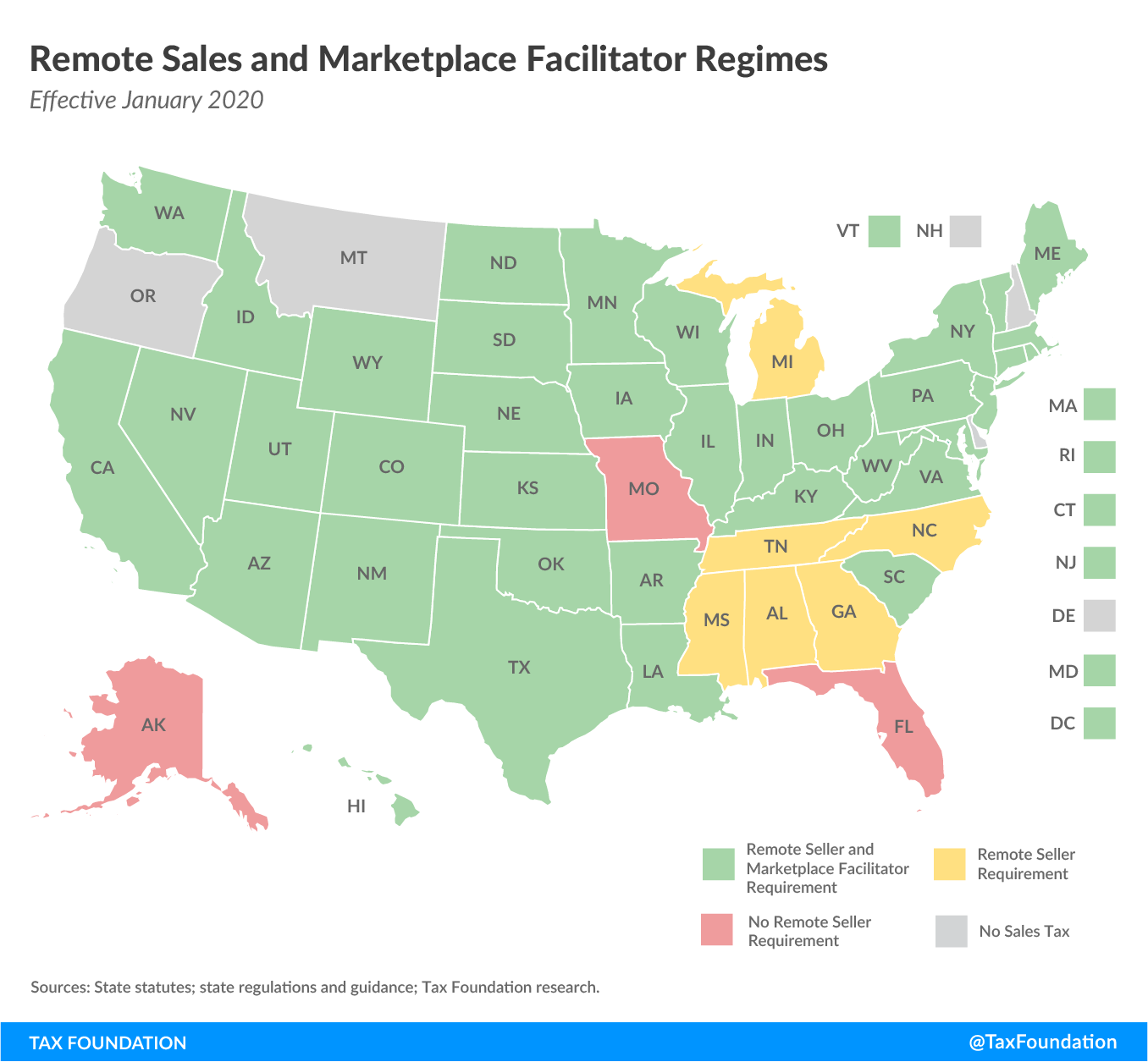An internet sales tax is a sales and use tax collected and remitted on remote sales, many done online. In 2018, the U.S. Supreme Court ruled that states could impose such obligations on sellers lacking physical presence in the state, vastly expanding the reach of these collection and remittance requirements.
How Are States Able to Tax Online Sales?
Prior to the Supreme Court’s 2018 decision in South Dakota v. Wayfair, only businesses with a physical presence in a state could be required to collect that state’s sales tax. The Wayfair case overturned this “physical presence standard,” granting states the authority to tax remote sales in which the seller lacked a physical presence in the state.
Now, 43 of 45 states with statewide sales taxes have adopted collection and remittance obligations for remote sellers, and 40 have implemented so-called marketplace facilitator regimes (platforms such as eBay, Etsy, or Amazon Marketplace).
Consumers already owed use tax on untaxed out-of-state purchases, but compliance with this self-reported portion of the sales and use tax has always been low. Post-Wayfair, states are empowered to require remote sellers to collect the tax at the point of sale, though these expanded sales tax regimes must still meet federal constitutional standards. That is, they must be designed and administered in such a way that does not discriminate against or unduly burden interstate commerce.
Most states, moreover, have adopted provisions shifting the collection burden to platforms (such as those listed above) for facilitated online transactions. These marketplace facilitator regimes create multiple advantages. For the taxing state, they cut down on administrative costs and allow them to tax sellers too small to meet compliance thresholds on their own; for sellers, they reduce compliance burdens by centralizing responsibilities in larger companies in a better position to handle the process.
Structural Considerations
Before Wayfair, states found creative, if sometimes dubious, ways to expand the definition of physical presence, and thus their taxing authority, such as through click-through or cookie nexus, or notice and reporting requirements for remote sellers. Now that states have a more straightforward way to impose sales tax obligations, they should repeal these vestiges of the prior regime.
States should also take note of the factors present in the South Dakota law challenged by theWayfair case, sometimes termed the “Wayfair Checklist,” which the Supreme Court strongly suggested would protect it against any further legal challenges:
- A safe harbor for those only transacting limited business in the state;
- An absence of retroactive collection;
- Single state-level administration of all sales taxes in the state;
- Uniform definitions of goods and services;
- A simplified tax rate structure;
- The availability of sales tax administration software; and
- Immunity from errors derived from relying on such software.
Stay updated on the latest educational resources.
Level-up your tax knowledge with free educational resources—primers, glossary terms, videos, and more—delivered monthly.
Subscribe
